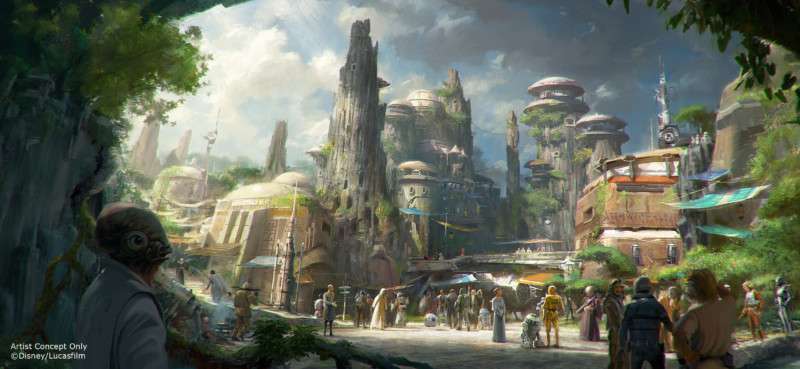Eight takeaways from eight years of ‘Design Trends’ presentations
by George Walker
Shawn McCoy of JRA gave his first annual “Design Trends” presentation at IAAPA Orlando in 2011 and will give his next of the series at the 2018 expo in November. In this article, fellow themed attraction designer George Walker analyzes and summarizes some of Shawn’s more significant findings over the years, and the trends within the trends. George made a thorough review of the presentations in addition to discussing them with Shawn.
Following 2018, Shawn has made the decision to take a break from hosting the Design Trends series in order to re-energize, and allow space for other voices to be heard, with plans to refresh the series in the near future. The industry has benefited from Shawn having shared these valuable insights, year after year.
“2018 Emerging Trends in Immersive Design” takes place on Monday, November 12th, 2018 from 3:45-5:00pm in room S3330CD of the Orange County Convention Center. A recording of Shawn’s presentation will be available on JRA’s YouTube channel (www.youtube.com/ jackrouse) in the week following the IAAPA Attractions Expo.
ABOVE IMAGE: Concept art from the new Star Wars Galaxy’s Edge land opening next year at Disneyland and Walt Disney World Photo © Disney
———-
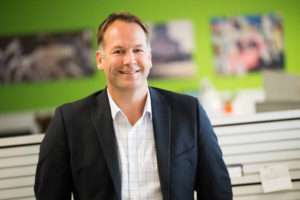
Every year for nearly a decade at the IAAPA Attractions Expo in Orlando, one of the best minds in our industry – Shawn McCoy, Vice President of JRA – has gifted us with his “Emerging Trends in Immersive Design” presentations.
As a theme park designer challenged to bring outstanding design to attractions, I have found my own, annual pilgrimage to the Orlando IAAPA Expo and Shawn McCoy’s presentations to be just the battery-rechargers I needed. I have found great value in contemplating the “keepers,” the insights into how the minds and hearts of our industry’s audiences responded to those innovations. Among other things, it has been an opportunity to test my creative vision against how well it synced with Shawn’s astute observations about the way audiences were reacting to those trends.
As Shawn puts it: “It’s not about replicating something cool that you see. It’s about replicating that passion for creatively taking risks and trying something new.” He explained that his hope was that his presentations of all those various trends, technologies, and techniques would inspire IAAPA audiences themselves, as much as they had inspired him.
What is a “trend”?
Trends, by definition, can be transitory. That’s why social media can incessantly serve up breathless “trending now” alerts. Such “trends” usually have a short shelf life and may more appropriately be defined as “fads.” But there are trends that can be far more deep-rooted, and therefore serve as a rich resource for those who create entertainment and learning experiences for today’s audiences.
In Shawn’s vocabulary, a trend is a “product, service, technology, or technique that doesn’t represent a moment; it represents a movement.” By comparison, a fad is “present-looking” with “a quick adoption rate but also a quick drop rate.” It might as well stand for “Fleetingly Attractive Distraction. It doesn’t evolve or adapt; it provides short term value; it is a tactic; a moment.” Fidget spinners, for example, are a fad, not a trend.
What do trends tell us?
A great part of Shawn’s insight has been about the meaning of specific trends, as well as the trends themselves. His reports on the technological, strategic, and innovative design trends are, themselves, exciting and inspirational. It has been great fun to learn about things that, the previous year, did not exist. But the world of theme park, museum, and attraction design is always going to be about “What’s next?” “What’s new?” Shawn provided insights into what any given year’s trends were telling us about our clients and the people our clients are trying to reach and motivate. The best trends will quickly transition from momentarily unique to conventionally mainstream. Shawn’s explanations of what those trends teach us are immutable.
Have you experienced that moment when you are working on a project and suddenly intuit exactly what is going to happen next – how the audience will respond to what you are creating? These flashes of understanding are no accident. They are the reward of many years of engagement in our craft, which include the diligent study of emerging technology, cultural shifts, and evolving audiences.
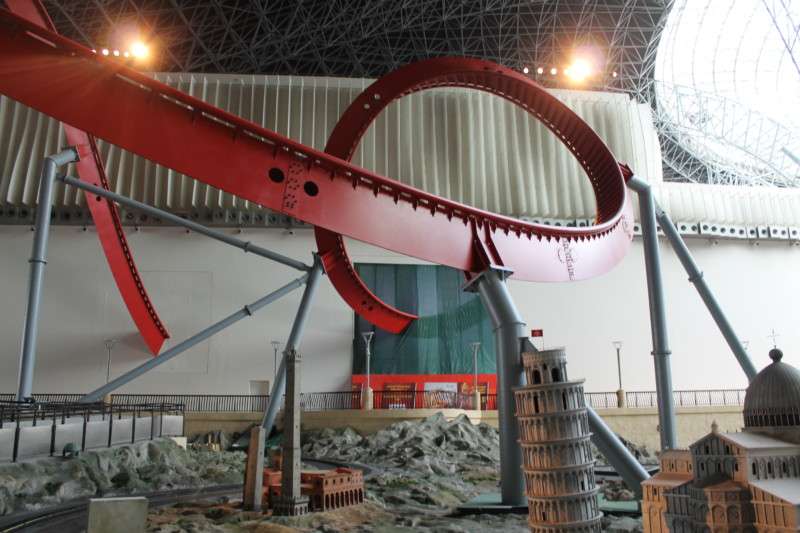
An immersive trend comes to life in the field
The kind of inspiration Shawn hopes to convey in his IAAPA talks took form for me recently during the testand-adjust phase of the up-coming MISSION: Ferrari attraction at Ferrari World Abu Dhabi. I was deep in the weeds working with the artists to balance the light levels with the brightness of the paint colors so that they would match the integrated media that is cleverly projectionmapped into the show sets. As we experimented with different combinations, the process required going to show conditions, which means turning off the lights and firing up the projectors. As usual, there were several general workers on site who were not privy to what the point was of this tangle of steel track, show sets, and hightech gear.
This was the point when one of Shawn’s observations about the emerging trends of audiences truly kicked in for me. Show sets may look neat, and projection may look cool, but audiences need to feel they are part of the story. They must feel engaged.
When we turned the show conditions on for the first time, I witnessed a moment of storytelling wonder first-hand. The crew on the scaffolding stopped to drink in the environment, now fully enriched with the lighting, audio,
and rolling media clip. They enjoyed it, but they hadn’t been engaged yet. Then, without warning, the classic bad guys show up both on the screen and as audioanimatronic figures dotted throughout the sets, complete with the dramatic underlying score. You, the audience – or in this case the unexpecting workers – were under a surprise attack! I watched as they literally ducked for cover until their surprise turned to laughter and highfives with one another.
Shawn’s advice guides us all to moments like these. Don’t just give audiences something cool to look at anymore; engage them directly and make them part of the story.
What matters most
Learning what Shawn McCoy found cool each year has been fun. But understanding what those discoveries tell us is what matters most. “The more presentations I did,” Shawn explains, “the more passionate I became about not only finding the next cool project to talk about, but also understanding what makes a new attraction resonate with audiences. What inspires them to think or to feel? What makes an attraction stand out and set a new bar for audience engagement? What social trend(s) is the attraction tapping into? What drives repeat visitation? This constant exposure to the latest trends – and perhaps more important, what makes these trends so relevant to audiences – has also helped change my way of thinking when working with my colleagues on new concepts.”
But Shawn has not limited his journey to explorations in the attractions, theme park, and museum industries. He explains that “the other thing that’s been fun throughout the last few years of analyzing trends is incorporating tools, technologies, and techniques from outside the themed entertainment industry. Throughout the last nine years, I’ve included case studies from Apple and Mike’s Car Wash, as well as immersive design applications in the military, health, and educational fields. Even within the greater visitor experience industry, there have been lessons that museums can learn from theme parks, and vice versa. I think the basic principles of creating personalized experiences transcend industry and scale, and we can all benefit from each other’s knowledge.”
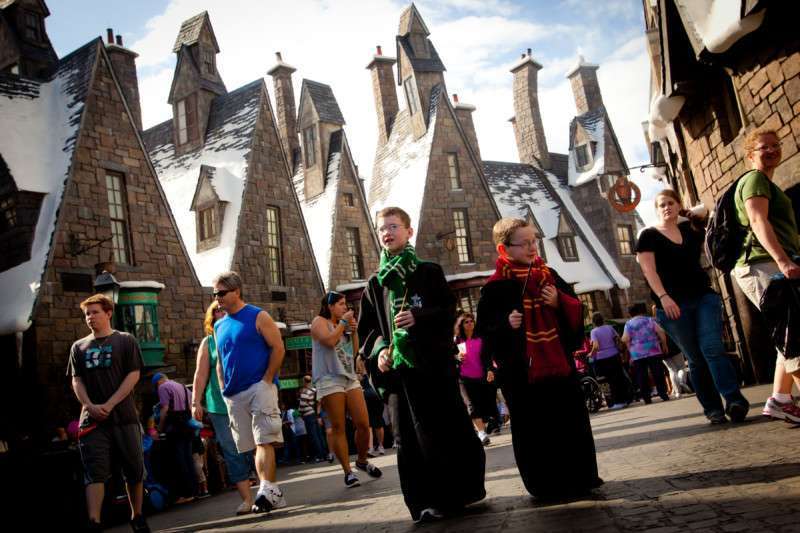
“Design Trends” Takeaways
From all of this research, Shawn has sorted out the detritus and provided us with his wisdom and perspective, gained through years of hands-on experience with a top design firm working on some of the most innovative projects in the world, and thought leadership born from many hours of observation, consideration and insight. He has given the framework or bones to which we can add the flesh most appropriate to our individual projects. Among them:
1) The story is king. The most effective presentations, whether in theme park attractions, museum exhibits, or other venues, will tell a story powerfully, and that means every detail – scenic, queue, technology – is an essential component of the story. Shawn explains that “today’s audiences are constantly being barraged by messaging and content – from their phones, their tablets, their computer and their televisions. So, you have to craft your story in a way that cuts through the clutter, by surprising them; by telling them great stories.”
2) Immersion is mandatory. Shawn reminds us that attraction design has a short time window in which to capture and hold the attention of guests. One way to address that is for attraction creators to “continue
Universal Studios’ Hogsmeade is a prime example of how a park can create a fully immersive and entertaining land based on a popular IP Photo courtesy of Univeral Orlando Resort.
to look for new and exciting ways to ‘blur the lines’ between fantasy and reality. This not only means creating new ways to create stunningly immersive environments through scenic, media, VR and AR, but also stretching that immersion into new areas. For example, the planned immersive hotel experience at Star Wars: Galaxy’s Edge opening at Disneyland and Walt Disney World in 2019 promises to take story, audience participation and immersion to a whole new level by extending the guest experience outside the borders of the theme park proper.
3) Immersion requires guest participation. Today’s attraction guests want to be in the story, not just passive audience members. Shawn says that he’s learned that “audiences want to be engaged in a personal and emotional manner. They really want to become fully immersed within the story that you are telling,” says Shawn. But, “they are no longer content to just observe – they want to become a part of the story, have an effect on it. They want the experience to change over time, or every time, so that it feels fresh on every visit. It’s a concept The Void (a production company of whole-body fully immersive VR experiences) refers to as ‘Hyper-reality – the next stage beyond VR’ – where guests navigate their way through the rooms of a VR attraction yet have to open doors and manipulate other features physically.”
4) Technology alone is not enough. Audiences have become more sophisticated and demanding of quality experiences. They are used to getting a wide variety of high-quality content, when they want it, where they want it, and how they want it. They are used to cool technology in their daily lives, so you can’t trick them with the latest gadget – at least not for very long.
5) Attractions are an antidote to digital isolation. Will video games and artificial intelligence (AI) technologies enjoyed in one’s living room replace trips to physical attractions like theme parks and museums? Shawn doesn’t think so. In one of his past presentations, he suggested that you need to “disconnect to reconnect,” referring to simpler, “analog attractions that replace ‘digital isolation’ with human interaction.”
6) Theme parks and museums are not the only place to look. There is a gap in the market for indoor urban attractions that attract both tourists and locals over the long term. For example, shopping malls are looking for ways to retain their current audiences and attract new audiences, so more and more operators are looking for that themed anchor attraction.
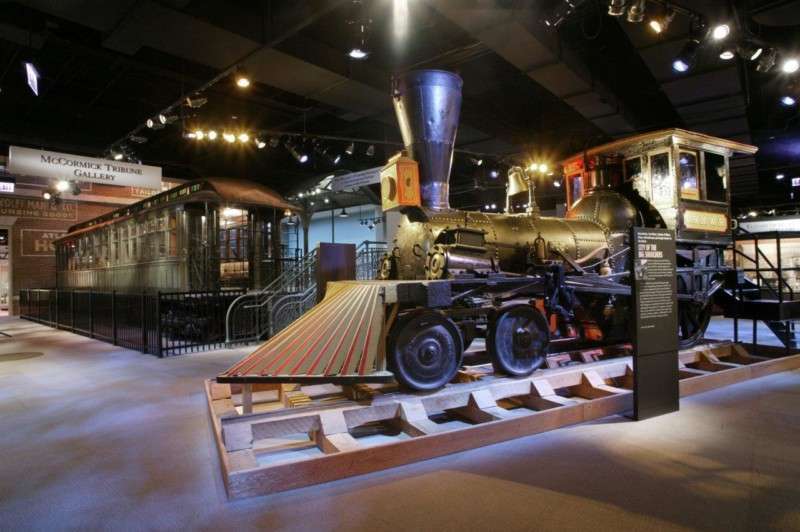
7) The leading trend: World building. According to Shawn, the practice of “world building” results in “a themed land that immerses its guests through its maniacal focus on ensuring that every aspect of the guest experience – from the coasters to the retail to the restrooms – is designed as an ‘in world’ component of a larger narrative, within which guests become an active participant.” He cites The Wizarding World of Harry Potter [Universal] and Pandora – The World of Avatar [Disney] as strong benchmarks. “Both lands certainly have a rich foundation of stories, characters and environments from which to draw, but it is their commitment to keeping the guest within these worlds at all times that really sets them apart.”
8) Create magicians. Shawn McCoy has talked about the value of crowd sourcing. We now live, Shawn posits, “in a world where we can collaborate with our customers about what they want. We’ve seen how the public can select exhibition themes and specific content in museums. What about the public actually creating content?” He quotes Darren David, Founder and CEO of interactive media firm Stimulant, who said: “The best experiences aren’t those that create magic, but those that create magicians.”
Shawn tells of the introduction of crowd sourcing as a means of providing better insights into what our audiences want. For example, Chicago History Museum recently organized a crowd-sourced competition where the public could suggest themes for the museum’s next exhibition. Rather than planning exhibits based on what museum personnel thought people should learn, they asked demographic groups such as youth and blue collar workers what they wanted to explore. Such interactions with potential and existing audiences can, Shawn enthuses, “beautifully symbolize how exhibits and programs can break down social barriers and even barriers within oneself.”
In his 2017 IAAPA presentation, Shawn told his audience, “This is a very exciting time to be in the design business, and I hope I can feature one of your creations in the future.” At this writing, we are approaching the time for Shawn’s 2018 “Design Trends” presentation, which reportedly will be his last for a few years. He has showered us with ideas, illustrations, and case studies. Even better, he has provided sage analysis and insight.
So here’s a big shout out to Shawn McCoy, and also a warning to him: We will remember and employ your “keepers,” and we’ll be back with such great ideas that you’ll have to return soon to present them. Thanks, Shawn. We’ll see you then! • • •
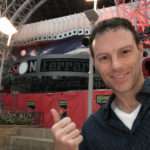 George Walker, Senior Art and Production Director, Universal Creative – Having recently joined Universal Creative, George is helping tackle the exciting new developments at Universal Studios Japan. He has also nearly concluded his service as Creative Director for Ferrari World Abu Dhabi, where he oversaw the creation of eight new attractions as well as restaurants, gift shops, and area development, with the park expansion’s final E-ticket attraction, MISSION: Ferrari, opening soon. Overlapping this role, George also spent three years developing new attraction concepts as Senior Vice President of Dynamic Attractions, where the company earned three consecutive Brass Ring Awards for Best New Attraction Concept, including the ground-breaking “All-Terrain Dark Ride” last November. Referring to himself as a “Story Builder,” George is passionate about the integration of themed design into the destination resort industry, where his presentations have earned him a nod as a topic expert.
George Walker, Senior Art and Production Director, Universal Creative – Having recently joined Universal Creative, George is helping tackle the exciting new developments at Universal Studios Japan. He has also nearly concluded his service as Creative Director for Ferrari World Abu Dhabi, where he oversaw the creation of eight new attractions as well as restaurants, gift shops, and area development, with the park expansion’s final E-ticket attraction, MISSION: Ferrari, opening soon. Overlapping this role, George also spent three years developing new attraction concepts as Senior Vice President of Dynamic Attractions, where the company earned three consecutive Brass Ring Awards for Best New Attraction Concept, including the ground-breaking “All-Terrain Dark Ride” last November. Referring to himself as a “Story Builder,” George is passionate about the integration of themed design into the destination resort industry, where his presentations have earned him a nod as a topic expert.


